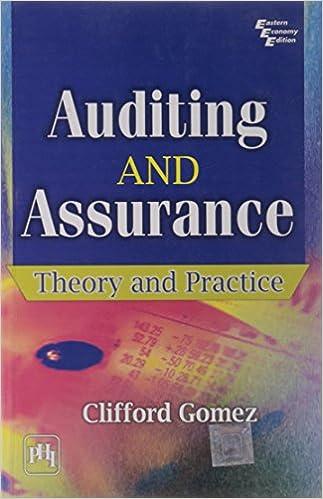Question
2. Which of the following costs would be classified as a period cost: A. advertising expenses. B. direct labor. C. plant utilities. D. production supervisors
2. Which of the following costs would be classified as a period cost:
A. advertising expenses.
B. direct labor.
C. plant utilities.
D. production supervisors salary.
7. An example of a cost that is likely to have an indirect relationship with products being manufactured is:
A. sales force salaries.
B. materials used in production.
C. wages of assembly line workers.
D. production line labor costs.
8. The three components of product costs are:
A. indirect material, indirect labor, manufacturing overhead.
B. direct labor, manufacturing overhead, direct material.
C. direct material, indirect labor, manufacturing overhead.
D. manufacturing overhead, indirect material, direct labor.
9. Which of the following is NOT an inventory account for a manufacturing company?
A. Finished goods.
B. Work-in-process.
C. Raw materials.
D. Cost of goods sold.
10. The predetermined overhead application rate based on direct labor hours is computed as:
A. actual total overhead costs divided by actual direct labor hours.
B. estimated total overhead costs divided by actual direct labor hours.
C. actual total overhead costs divided by estimated direct labor hours.
D. estimated total overhead costs divided by estimated direct labor hours.
11. Which of the following describes the correct sequence of flow of costs for a manufacturing firm?
A. Raw materials, finished goods, work-in-process, cost of goods sold.
B. Work-in-process, raw materials, finished goods, cost of goods sold.
C. Cost of goods sold, work-in-process, finished goods, raw materials.
D. Raw materials, work-in-process, finished goods, cost of goods sold.
12. When a product is sold, the product cost is transferred from the finished goods inventory account on the balance sheet to:
A. Cost of goods sold on the balance sheet.
B. Cost of goods sold on the income statement.
C. Gross profit on the income statement.
D. Operating expense on the income statement.
| 13. | Total manufacturing (product) costs for the month on the statement of costs of goods manufactured equals:
| |||||||||||
| 14. | A product with a selling price of $2,000 and a gross margin ratio of 30% had COGS of:
| |||||||||||
Please answer your help would be really appreciated.
Step by Step Solution
There are 3 Steps involved in it
Step: 1

Get Instant Access to Expert-Tailored Solutions
See step-by-step solutions with expert insights and AI powered tools for academic success
Step: 2

Step: 3

Ace Your Homework with AI
Get the answers you need in no time with our AI-driven, step-by-step assistance
Get Started


